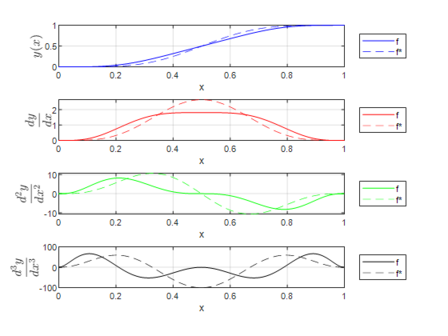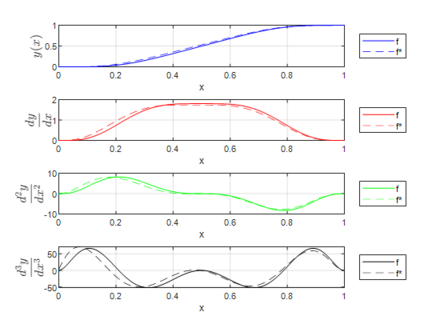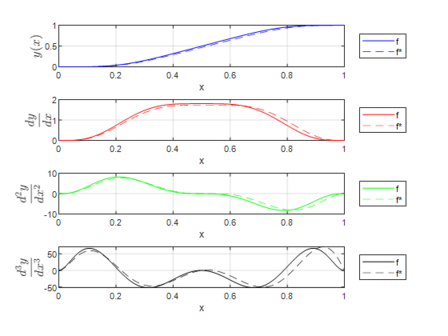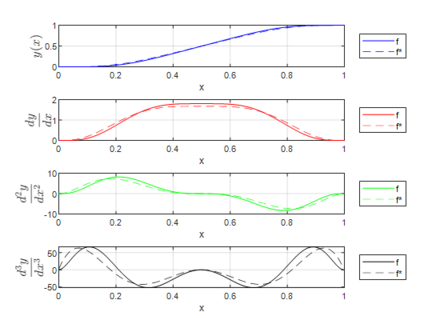Activating and configuring the AntiSlosh function
- In the configuration of MOVIKIT® MultiMotion Camming, open the "Basic settings" configuration menu and activate the "AntiSlosh" add‑on under "Functions used".
- In the configuration of MOVIKIT® MultiMotion Camming, open the AntiSlosh configuration menu.
- Enter your model parameters in the "General parameters" section. See also Determining model parameters.
- You specify the required profile using the parameters in the "Travel profile parameters" section. The parameters "End of cycle", "Starting point of movement", "Distance of movement [ΔX2]" and "Stroke of movement [ΔY]" result from the boundary conditions of the application.
- To optimize the AntiSlosh function, adjust the travel profile using the normalized parameters "Jerk in the middle of movement", "Snap at the starting point of movement", and "Snap at the end point of movement". Note the following:
- Update the configuration data and the IEC project on the memory card of the MOVI-C® CONTROLLER. See Generating an IEC project.




